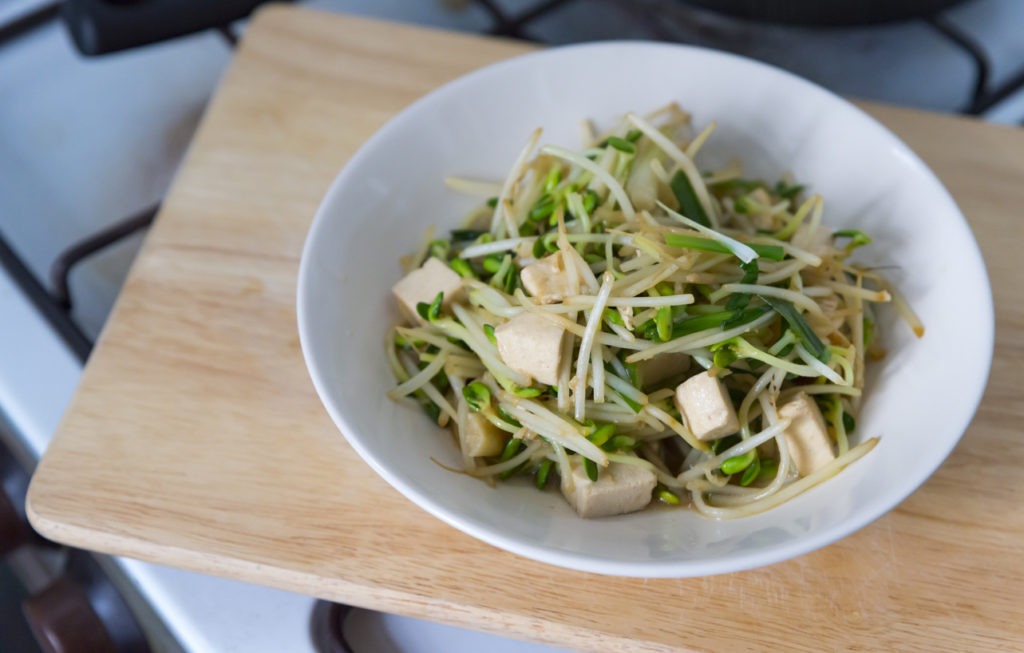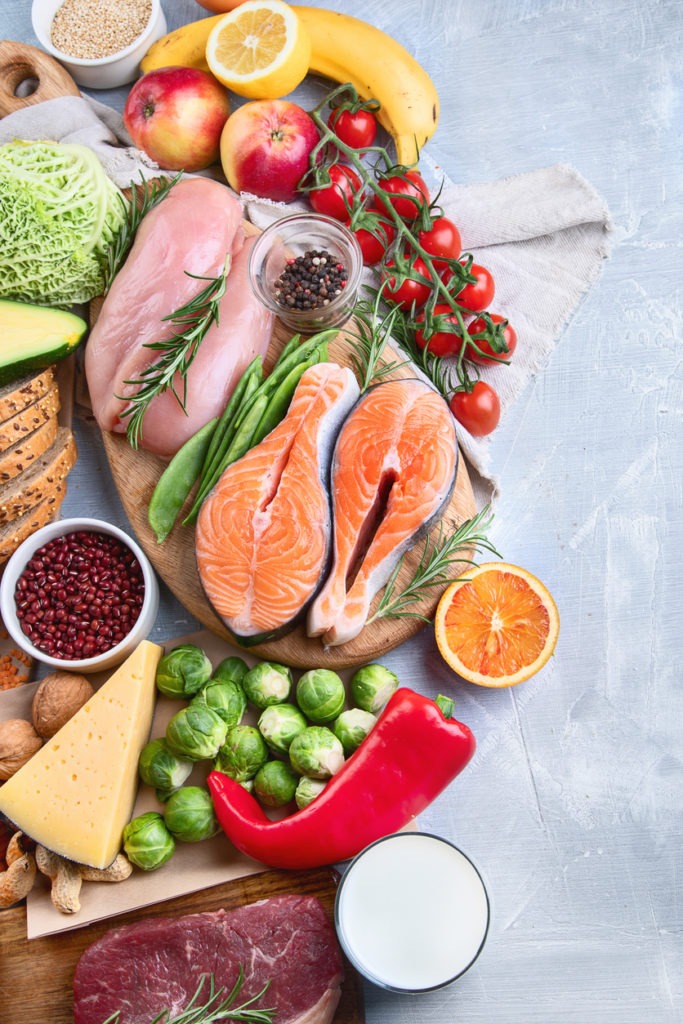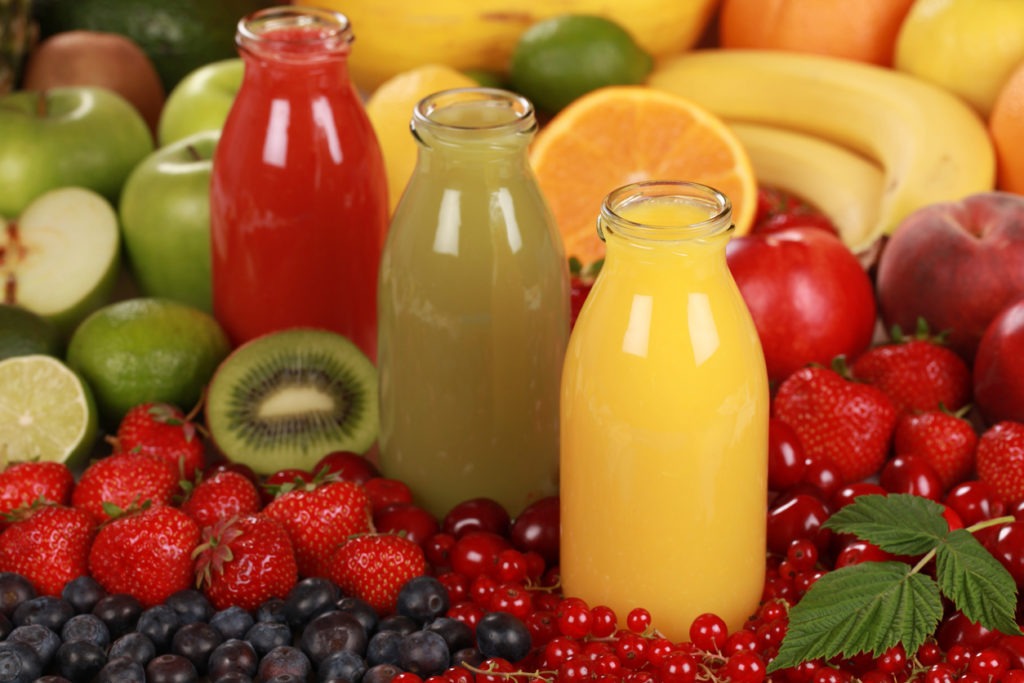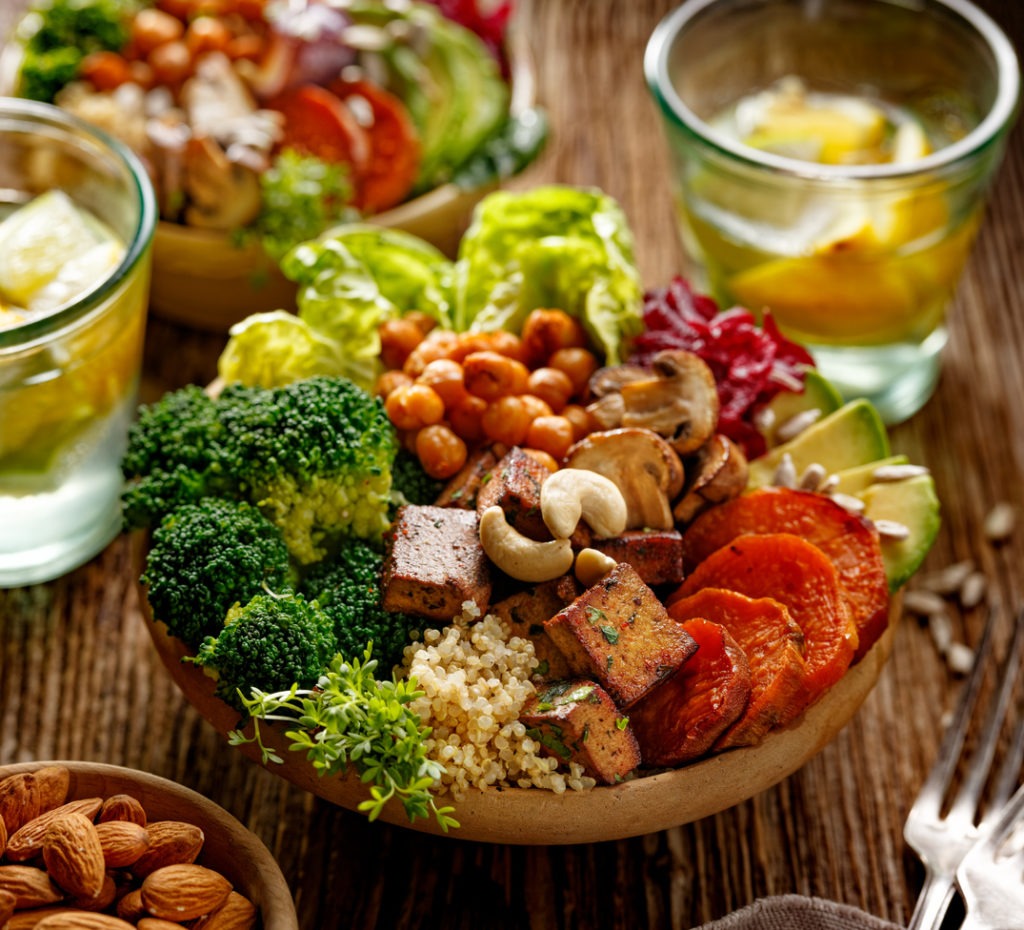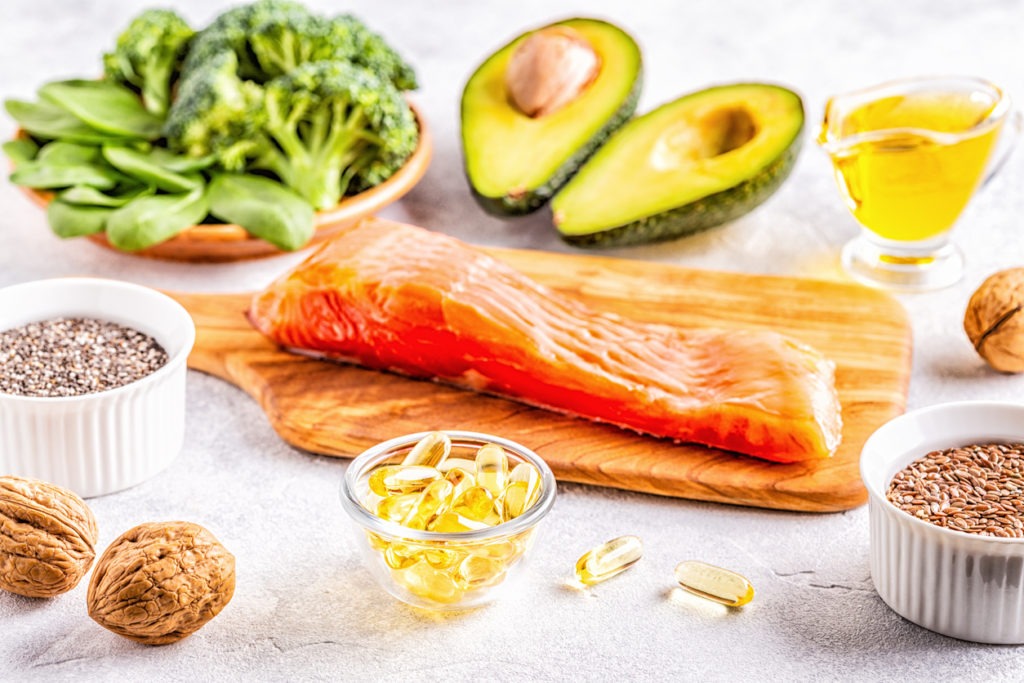In everyday language, a diet is something you do to slim down, get healthy, or treat an illness. However, what exactly do we mean when discussing a diet? The words diete, from Old French, and dieta, from Medieval Latin, indicate “a daily meal ration,” from or where our modern word “diet” was derived. When discussing human nutrition, one’s diet refers to the overall pattern of food and drink consumed daily for a specific goal, such as weight loss, gain, or improved health. Considering that many diets are slight variants of others, it would not be easy to discuss them. Most people adhere to one of the following diets: the vegetarian, low-carb, low-fat, or high-protein diet, while others are brave or weird enough to engage in a raw food diet.
Diets based solely on raw, unprocessed plant foods are known as “raw food diets.” Fruits, vegetables, nuts, seeds, sprouted beans, grains, and legumes make up the bulk of the diet. Depending on how one defines the term “processed,” items, including fermented foods, nut milk, and vegetable juices, may be included. Health, disease prevention, and a return to a simpler and wholesome life are at the heart of the raw food concept.
Types of Raw Food Diet
1. Sproutarian Diet
The term “sproutarian” refers to someone who eats sprouts primarily. However, rare sproutarians exist solely on sprouts; the majority include other raw foods in their diet. Sprouts are incredibly nourishing since they contain all the elements a plant needs to survive and flourish. Sprouts have earned a reputation as one of the vitamin-richest foods available. In addition, they stimulate cell renewal, giving you renewed vitality and strength.
2. Living Fooder Diet
The term is a common variant. The living foodist follows a vegan diet high in sprouts, raw fermented foods, and raw blended foods. Both diets are based on raw, organic, and living foods; however, their approaches are slightly different.
3. Natural hygiene diet
The kind of diet that includes non-vegetarian foods into the vegan diet. Most health professionals advise against diets that are predominantly fruit. Some people who call themselves hygienists, however, promote fruit-heavy diets. Widespread differences exist among hygienists over the appropriateness of certain foods and activities, such as the consumption of sprouts, seaweed, dried fruit, and so on.
4. Instinctive Eating Diet
The term “Instinctive Eating” refers to a certain eating style known as “sequential mono-eating,” wherein changes in smell and taste serve as a “signal to cease eating.” Raw fruit, seafood, and meat are common staples of the instinctive diet, along with a limited amount of vegetables; however, carbohydrates and dairy products are typically avoided. Some instinctive eaters rarely or never consume meat or seafood.
5. Essene Diet or Lacto Vegetarian Diet
An Essene follows the raw food vegetarian lifestyle advocated by the Essene Gospels of Peace, which asserts that Jesus was a follower of the Essene sect. Their diet includes sprouts, wheatgrass, vegetables, and fruit. However, the Essene diet permits the use of raw dairy; hence the Essene diet is more accurately described as lacto-vegetarian than vegan. Many people choose a lacto-vegetarian raw food diet because of its many health benefits, including better heart health, easier weight loss, better blood sugar control, and lower cancer risks.
6. Fruitarian Diet
A “fruitarian” is someone whose main source of nutrition is fruit. Ideally, a fruitarian diet would consist of 75% or more fruit. Some fruitarians consume very little sprouts, and numerous fruitarians eat leafy greens, but these groups are by no means universal. However, the risks of selenium, zinc, calcium, iodine, and vitamin B12 deficiency increase on such a diet. While some hardcore fruitarians aim for a diet consisting of 90% fruit, experts recommend that fruits make up at most 75% of your daily caloric intake. But, if you’re serious about adopting this way of life, you should limit your fruit consumption to at most 50 percent of your daily calories.
7. Liquidarian or Juicearian Diet
One who abstains from solid food in favor of juices and other liquids is called a “liquidarian.” Cleansing diets are more common as part of a short-term plan than as a permanent way of eating. As a subset of raw vegans, juicearians exist because of widespread recognition of juice’s cleansing and nutrient-providing properties. Though you can juice just about anything raw, the most common options are fruits and vegetables. Regarding nutrition, some people are very committed to their “juice diets,” which consist solely of fresh fruit juices. They contain many beneficial minerals, including copper, iron, sodium, potassium, magnesium, and iodine. Finally, you can get a great deal of vitamin C by squeezing the juice of citrus fruits like grapefruits and oranges.
8. Air Diet
An air eater doesn’t eat but receives fuel from the air. The unique ritual of a secretive Tantric group. You should seek out a real breatharian teacher in India if you’re serious about engaging in an air or breatharian. The French established this diet with one simple rule: don’t eat. Breatharianism, the notion that humans can get all the energy they need from the sun and air alone and so don’t need to eat, is credited as an inspiration and basis for the air diet. All you must do is make something tasty, even if it’s just a bunch of junk food. If you want to deceive your brain into thinking that you’ve eaten without eating, you can do so by keeping the hot food in front of you and ‘eating’ the air above the meal.
9. Ovo Vegetarian Diet
Raw foodist who doesn’t want to be labeled as “vegan” or “vegetarian. This raw food diet usually adhere to a vegan diet. However, some also consume raw dairy or meat. You need to be eating at least 75% raw food before you can call yourself a “raw fooder.” A raw food ovo-vegetarian diet is the antithesis of a lacto-vegetarian eating plan. A vegan diet avoids animal products such as meat and dairy in favor of plant-based options like nuts, seeds, and whole grains. These raw foodists are sensitive to or allergic to dairy products, as they cannot digest lactose. Others, however, are committed to a vegan lifestyle yet struggle to meet their protein needs this way. As a result, they use eggs to meet their bodies’ daily protein requirements.
10. Vegetarian Diet
Johnny Lovewisdom of Ecuador advocates the Vegetarian diet, which features a high percentage of raw fruit and vegetables and raw yogurt. The Vitarian diet consists primarily of plant-based foods, with raw, cultured milk as an additional source of nutrition. Fruits and vegetables are the foundation of the Vitarian diet, which is composed entirely of living foods (raw, uncooked) and supplemented with raw cultured milk* in the form of yogurt, cheese, kefir, kumis, sour cream, butter, etc.
Pros and Cons of Raw Food Diet
Many advocates of the raw food diet claim that their improved health can be attributed to their choice to avoid cooking their meals. Health and fitness benefits and weight loss can be realized by switching to a raw food diet. Some prospective advantages will be discussed in the following sections.
1. It has the potential to boost the body’s absorption of certain nutrients
Because cooking changes the structure of nutrients and enzymes, it can reduce their digestibility and the body’s ability to use them. Many vegetables, especially those high in vitamin C, folate, and potassium, have a bioavailability that drops by as much as 20% when cooked. While some antioxidants, like polyphenols, could be rendered less bioavailable during the cooking process.
2. It has the potential to boost cardiovascular health and lower cholesterol
Every additional serving of fruit or vegetables per day relates to a 5% lower risk of ischemic stroke, and increasing your intake by more than two servings a day is associated with a 10% lower risk.
3. Potential Benefits for Digestive Wellness
A diet that places a premium overall, unprocessed plant foods, including soluble and insoluble fiber, is expected to affect gut microbiota and overall digestion positively. This is crucial because research suggests that the gut microbiome can influence the risk of developing type 2 diabetes, cardiovascular disease, and colon cancer. The gut microbiota also directly affects systemic inflammation, which has numerous beneficial effects, including increased longevity.
4. Promotes regular bowel movement
Fruits, veggies, nuts, seeds, grains, and legumes, all staples on a raw food diet, are rich in fiber because of their whole, unprocessed state. High-fiber diets promote regular bowel movements and have been linked to a reduced risk of cardiovascular disease, stroke, high blood pressure, and several malignancies. However, almost 95% of Americans need to get the daily value of dietary fiber they need.
5. Reduce the risk of heart failure and chronic renal disease
Salt intake is low on a raw food diet because raw foods contain very little sodium. Hypertension, heart failure, and chronic renal disease may all be averted with a diet low in salt. Sodium is still a necessary component, although a raw food diet may be deficient in it.
Raw Food Diet Disadvantages
There are, as you would have guessed, some drawbacks to a raw food diet:
1. Significant Weight Loss
Nearly half of people who try to live off a raw food diet feel tired and weak. Because of this, many people who try the program report rapid weight loss because of the shift in their eating patterns. The rate of weight loss on a raw food diet is often so considerable that it can lead to excessively low body weights and even anorexia, which may be seen as a negative outcome for many diets. The concern is that rapid weight reduction can lead to starvation and significant muscle loss, neither of which are desirable outcomes.
2. Potentially Causes Menstrual Cycle Abnormalities
A difficulty unique to women on a diet is that it can cause them to lose weight to the point where they no longer menstruate (amenorrhea). There is cause for concern that 70% of women who adopt a raw food diet may experience menstrual irregularities that were not present before starting the diet. The risk of developing osteoporosis and cardiovascular disease in later life is thought to be increased in women who never experience menstruation.
3. Unless supplemented, it may lead to nutrient deficiencies
Except for vitamin B12, which must be supplemented, a plant-based diet can meet all the recommended daily allowances of nutrients. Unfortunately, it can be more challenging for plant-based dieters to get enough calcium, iron, and zinc because of the diet’s potential lack of accessibility to these nutrients. As a result, deficiencies in these nutrients are more common in plant communities.
4. Promote unbalanced diet
The following could be inconsistent: Veggies and fruit comprise the bulk of a raw food diet. Commonly, these items have few calories. To achieve nutritional goals, enough calorie intake must be maintained. Dairy and several types of protein are also off-limits on a diet. Salt and oil are sometimes left out of raw food diets, leaving people deficient in an important mineral and beneficial fat.
5. Low levels of vitamins and minerals
People who eat mostly raw vegan food may have trouble getting enough vitamin B12, zinc, iron, vitamin D, and calcium. If levels are low, supplementation may be indicated. Some nutrients are more readily absorbed and bioavailable when cooked. Toasting pumpkin seeds in canola oil is good if you want more fat-soluble vitamin A. And lycopene levels in cooked tomatoes are higher.
CONCLUSION
Diets based solely on raw, unprocessed plant foods are known as “raw food diets.” This eating plan has been shown to reduce cholesterol, enhance heart health, and boost the gut microbiome, which may, in turn, reduce inflammation. However, the low caloric intake from a raw food diet may make getting all the nutrients you need challenging.
To simplify a raw food diet, it’s best to eat items as they naturally occur, without cooking or processing. In some forms of the raw food diet, processed foods are forbidden; if they are allowed, careful label reading is essential. Foods labeled as “roasted” or “baked” are not raw and should be avoided. Since the raw food diet is predominantly plant-based, it is an easy transition from a vegetarian or vegan diet. Raw milk, fish, and meat are not suggested for those who follow a raw food diet, but some adherents do eat them.
There are different ways to pursue health, and just because you want to lose weight doesn’t mean you’ll automatically be at your healthiest. You can do a lot to improve your health just by changing your diet, doing more exercise, and sleeping more. To see results, you need to choose a diet that is both healthy and practical for you.

